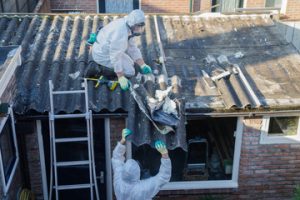Asbestos was once a widely used construction material valued for its durability, fire resistance, and insulation properties. However, over time, it became clear that exposure to asbestos fibers poses serious health risks. Today, managing asbestos is an important part of maintaining safe homes and workplaces. Attempting to deal with asbestos without proper training or equipment can be hazardous, making professional asbestos removal the most reliable solution. This guide explores why asbestos removal is necessary, what the process involves, and how it ensures safety and peace of mind for property owners.

Why Asbestos is Dangerous
Asbestos itself is not immediately harmful when intact and undisturbed. The danger arises when materials containing asbestos are damaged, releasing microscopic fibers into the air. These fibers can be inhaled, lodging in the lungs and causing long-term health issues such as:
- Asbestosis: A lung condition resulting in scarring and breathing difficulties.
- Mesothelioma: A rare and aggressive cancer linked directly to asbestos exposure.
- Lung Cancer: Risk increases significantly with prolonged exposure.
Because asbestos-related diseases often develop decades after exposure, prevention and early action are crucial. This is why professional removal services are so essential.
Where Asbestos is Commonly Found
Asbestos was heavily used in building materials for many years, meaning it is still present in older structures. Some common areas where asbestos may be found include:
- Pipe and boiler insulation.
- Floor tiles and adhesives.
- Roofing shingles and siding materials.
- Ceiling sprays or textured coatings.
- Cement sheets and panels.
Since asbestos is difficult to identify with the naked eye, laboratory testing is often required to confirm its presence.
Why Professional Removal is Essential
Attempting to remove asbestos without professional help is dangerous. Even minimal disturbance can release fibers into the air. Hiring trained specialists ensures that removal is carried out safely, effectively, and in compliance with regulations.
Key benefits of professional asbestos removal include:
1. Safety First
Professionals use protective gear, advanced containment systems, and specialized tools to reduce the risk of fiber release.
2. Regulatory Compliance
There are strict rules governing asbestos handling and disposal. Trained professionals ensure that all procedures follow legal and safety guidelines.
3. Specialized Equipment
From HEPA-filtered vacuums to negative air machines, professionals use equipment designed to capture and control asbestos fibers.
4. Thorough Results
Professionals are trained to locate hidden asbestos and remove it completely, minimizing future risks.
The Asbestos Removal Process
Professional asbestos removal is a careful and detailed procedure designed to protect everyone involved. The process typically follows these steps:
1. Inspection and Testing
A licensed inspector collects samples of suspected materials for laboratory analysis. This step determines the extent of asbestos presence.
2. Site Preparation
Before removal begins, the area is sealed with plastic sheeting and negative air pressure systems. Ventilation systems are shut down to prevent fiber circulation.
3. Containment
Warning signs are posted, and access to the work area is restricted. Only trained personnel wearing protective clothing and respirators are allowed inside.
4. Removal and Handling
Asbestos materials are carefully wetted to reduce dust and then removed using specialized tools. They are sealed in airtight, labeled containers for transport.
5. Disposal
The waste is transported to approved facilities that follow strict environmental guidelines for hazardous material disposal.
6. Final Cleaning and Clearance
HEPA vacuums and wet cleaning methods are used to ensure no fibers remain. Air monitoring and clearance testing confirm that the space is safe for re-entry.
Preventive Measures After Removal
Once asbestos has been removed, preventive steps can help maintain safe, healthy living spaces:
- Regular Inspections: Have older homes checked periodically for potential risks.
- Avoid DIY Disturbances: Do not cut, sand, or drill into materials that may contain asbestos.
- Maintain Ventilation Systems: Proper airflow reduces exposure risks.
- Respond Promptly: If ceilings, insulation, or flooring become damaged, seek professional evaluation immediately.
Benefits of Professional Asbestos Removal
Safe asbestos removal brings significant advantages, both immediate and long-term:
- Protects Health: Reduces exposure to dangerous fibers, safeguarding respiratory health.
- Restores Confidence: Provides peace of mind knowing that a property is free from hidden dangers.
- Preserves Property Value: Buyers are more likely to invest in properties that are asbestos-free.
- Ensures Compliance: Professional removal ensures all legal requirements are met.
Choosing the Right Asbestos Removal Service
Not all providers offer the same level of expertise. When selecting a service, consider the following qualities:
- Licensing and Certification: Ensures the team meets safety standards and regulations.
- Experience: Proven knowledge of handling complex asbestos projects.
- Clear Communication: Transparent pricing, processes, and timelines help build trust.
- Safety Record: A strong history of safe practices demonstrates reliability.
By carefully choosing a reputable service, property owners can be confident in the quality and safety of the removal process.
Asbestos remains a serious concern in many older homes and buildings. Left unmanaged, it can threaten health and compromise safety. Professional asbestos removal offers a comprehensive solution, combining specialized expertise, strict safety procedures, and effective results.
This process not only eliminates immediate risks but also provides long-term peace of mind, ensuring that living and working spaces remain healthy and hazard-free. By investing in professional services, property owners protect themselves, their families, and their future. Safe, asbestos-free environments are essential foundations for well-being and lasting comfort.